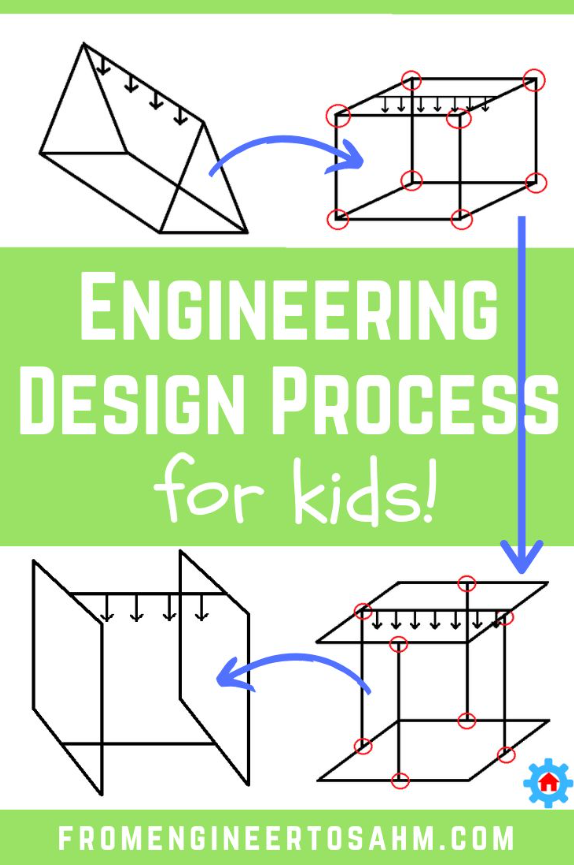Its hot in Texas right now! But that really goes without saying considering its summer. Summer in Texas usually means you’re sequestered in your house, much like the Northeast during winter. But being cooped up all day with kids is a recipe for disaster. So one such hot day, the boys and I bought some PVC pipe to make them a way to too off, and learn how to make their own backyard sprinkler using the engineering design process.
Using the Engineering Design Process to design a Sprinkler
The first step in the engineering design process is to brainstorm design ideas. So, my oldest and I came up with a few ideas for our sprinkler design. We talked about what shapes we should use, and the benefits of some shapes over others. We have new construction in our neighborhood and we used the houses being built as examples to pull from. He thought a rectangle or square would be the best shape for a base, much like the foundations in our neighborhood. Then he noticed the walls of the houses were built out of triangles. I told him the reason was because a triangle is the strongest shape because when a force is put on a triangle, the force evenly applies to all sides of the triangle.
With this new information, my son decided the base would be made of a rectangle and the sides would be made of triangles.
The design included a 5 ft by 3 ft rectangular base, with two equilateral triangles on the 3 ft sides of the base. The top of each triangle was connected to a horizontal pipe. The pipe had holes drilled into it, all pointing downwards for the water to spray out.
We calculated we needed about 35 ft of PVC pipe, and six fittings to connect all the pipe. We then headed to our local home improvement store to buy all our supplies. When we got to the store, we realized the fittings we were looking for didn’t exist!
And this was our first lesson on the engineering design process! Always try to design using existing materials. In our case, we should have learned what types of PVC fittings existed before creating our sprinkler design.
So we sat on the floor of the store and came up with a couple other designs. The first was just a plain cube, but we soon realized the fittings needed at the points circled in read didn’t exist either!
We saw the two most available fittings were elbows and tees. So our next design moved the vertical pipes to the center of the squares. This allowed us to connect the top and bottom squares with vertical pipe in the middle of a run of pipe using a tee. Then we could use elbows for the corner of the squares. But we looked at our design, my oldest and I both thought the design wasn’t very sturdy.
Then my son suggested we rotate our design 90 degrees, using the squares as support, and removing 2 of the connecting runs of pipe! As we drew the design out, we knew we had reached our final design! Our design was practical to make, easy to assemble, and required less material than any of our previous designs!
Steps of the Engineering Design Process
I asked my son what he had learned about the engineering design process we had just finished. He said, first you have to brainstorm ideas. No idea is too complicated, too easy, or impossible. Brainstorming does not need to be all new ideas. You can use examples in your everyday life (like houses being built) to create new ideas for your design.
The next step was drawing your design idea, so you have something to build from instead of just an idea.
The third step was to determine the supplies needed to build what we had designed. This step included determining we wanted to use 1/2″ diameter PVC pipe, and that we needed 35 ft of it.
The final step in the engineering design process was the many iterations we went through to come to our final design. Some questions we asked ourselves in this step were:
- Is everything we need for the design available?
- Is the design sturdy?
- Can the design be simplified?
Each time we answered a question we modified our design, and documented the design idea with a drawing. Documenting design concepts is important so you remember how you ended at the final concept, and prevents you from trying out old design ideas.
What would you like to design with your kids? A sprinkler? A fort? Maybe even a box car for racing? Use the engineering design process to create a feasible design, and have fun!
